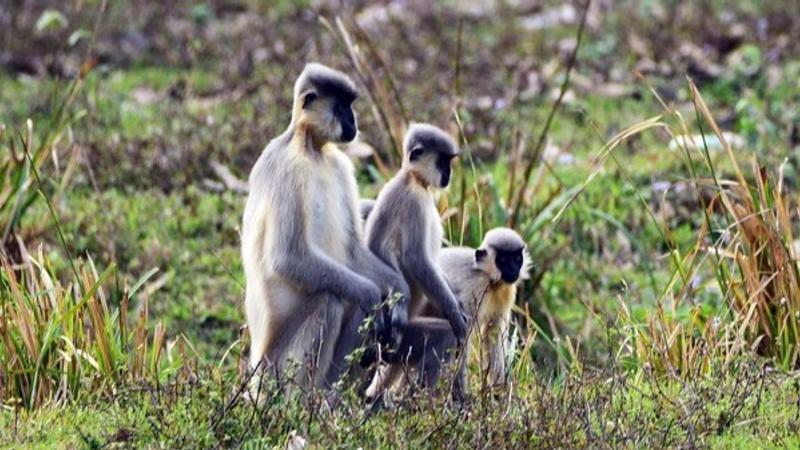Published 23:45 IST, September 10th 2024
Golden Langur in Crisis as Habitat Loss and Road Fatalities Threaten Assam's Rare Primate
Golden langurs in Assam face severe habitat loss and road fatalities due to deforestation and infrastructure development, prompting urgent conservation efforts.

Assam : The golden langur (Trachypithecus geei), a rare primate species native to the Indo-Bhutan border, is struggling to survive amidst significant habitat loss and increased road fatalities in Assam . Dr. Jihosuo Biswas, a senior primatologist at the Primate Research Centre Northeast India (NGO), has highlighted the grave situation facing this arboreal species.
Habitat Loss Due to Deforestation
Dr. Biswas points to deforestation as the primary driver of habitat loss for the golden langur. The conversion of forests into farmland and human settlements has led to the disappearance of over half of the species' habitat in recent decades, particularly in Assam 's Kokrajhar and Bongaigaon districts. "This transformation has led to the fragmentation of once extensive forested areas into smaller, isolated fragments, further threatening the survival of the Golden Langur population in these regions," he explained.
Increased Mortality from Road Accidents
The fragmentation of their habitat is compounded by infrastructure development, leading to high mortality rates from road accidents and increased exposure to predators. "As an arboreal primate, golden langurs may need to engage in terrestrial behaviors to cross disconnected areas within their home ranges," Dr. Biswas added. "Lack of connectedness due to recent linear infrastructure development within fragments comes at a price, including high mortality from road accidents or predators, food alterations, altered home ranges, and higher physiological stress and parasite burdens."
Dr. Biswas also noted the rise in road kills, electric hazards, and parasitic infections among golden langurs. "Road kills are considered the major direct human cause of mortality of terrestrial animals worldwide, and wildlife electrocutions have been documented as having an important impact on some animal populations in urban landscapes," he said. Since 2013, records from Nadangiri RF, Nayekgaon PRF-Rubber Garden-Baxamara-Amguri area, and Chakrashilla WLS show a troubling trend of increased road kills and other hazards.
Conservation Efforts and Community Involvement
In response, a study was conducted to understand the road crossing behavior of golden langurs. The research revealed that on 71% of occasions, the langurs crossed roads at ground level, ignoring traffic. Conversely, 29% of the time, they used existing canopy connectivity to avoid vehicles.
To mitigate these threats, efforts were made to construct artificial canopy bridges (ACB) in the Nayekgaon-Rubber Garden-Baxamara-Amguri forest complex. "We began designing and constructing artificial canopy bridges... opting to use HDPE (high-density polyethylene) pipes with 2 inches of diameter typically used for water supply and plastic rope of 1 1/2 inches of diameter instead of bamboo," Dr. Biswas explained. The use of HDPE pipes, known for their durability and environmental resistance, has proven effective.
Despite these efforts, road collision incidents persist. Between June 2022 and February 2024, seventeen road collisions were documented on the SH-14 road, resulting in six fatalities and several injuries among the langurs.
In addition to infrastructure solutions, local community engagement has been a critical part of the conservation strategy. Community members have been involved in planting trees to restore natural corridors and facilitate the movement of golden langurs between fragmented habitats.
Efforts continue to safeguard this endangered species and restore its natural habitat, with a focus on both practical interventions and community support.
Updated 23:45 IST, September 10th 2024




